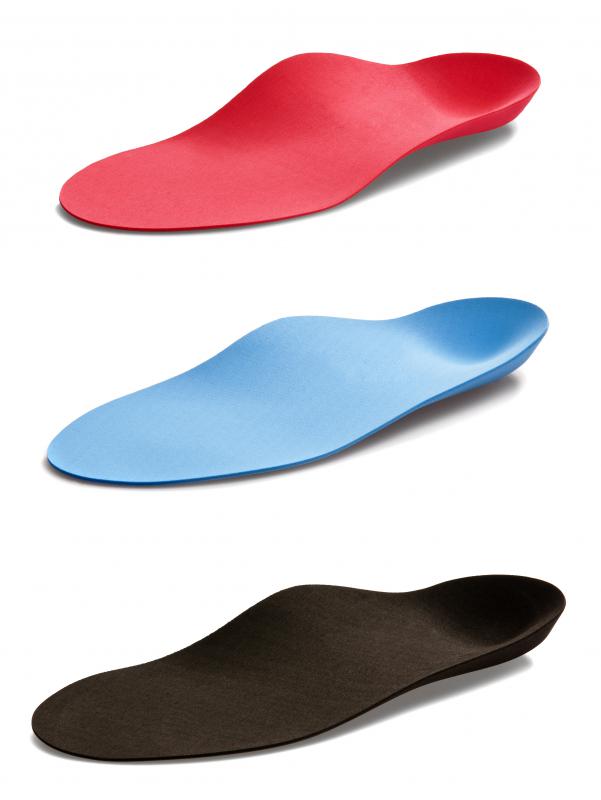At WiseGEEK, we're committed to delivering accurate, trustworthy information. Our expert-authored content is rigorously fact-checked and sourced from credible authorities. Discover how we uphold the highest standards in providing you with reliable knowledge.
How do I Choose the Best Hammer Toe Treatment?
To choose the best hammer toe treatment, sufferers should determine how flexible or rigid their hammer toes are, and choose the least invasive process which will then correct the problem. Flexible hammer toes can still be straightened by hand, and are treatable with a variety of shoe cushions and inserts. Rigid hammer toes are fixed and can no longer be straightened. This severe form of the condition can typically only be treated with surgery.
Hammer toe is a deformity in which toes are bent downwards at the joint. They become shaped like claws, causing the condition to also be commonly known as claw toe. This foot abnormality frequently affects the second and third toes of the foot. The development of hammer toes is often attributable to ill-fitting shoe wear, genetics, and as a secondary condition to pre-existing foot deformities, such as bunions and flat feet.

An individual experiencing this condition should begin by consulting his or her doctor to discover the best treatment for his or her specific case. Solutions for this foot problem often depend on the underlying causes for the deformity as well its severity. Treatment options typically range between corrective foot wear that can overcome claw toes when they first begin to develop, and minor surgery which can be necessary to correct toes that have been improperly curled for an extended period of time.

The best hammer toe treatment for cases in which the toes are still flexible is an orthotic shoe insert. An individual can determine whether the hammer toe is still flexible by attempting to stretch it back to a fully straight position. If the toe cannot resume its original straight shape, then it is considered rigid.
A shoe insert which addresses this condition in its early stages may be purchased in generic form over the counter in drug stores, or a specially fitted version may be prescribed and custom ordered by a doctor. Hammer toes typically contribute to the formation of thick and painful calluses on the ball of the foot. The orthotics are designed to encourage the toes to remain straight while relieving the pressure created on the bottom of the foot. The calluses may first need to be removed so that the foot can balance correctly. Cushioning then elevates the foot and reduces pull on the tendons and joints of the toes, allowing them to straighten over time.

Surgery may be the only hammer toe treatment option for cases in which the toes have become rigid. There are three common surgical options for this condition, and the final determination should be made by the patient's doctor. These procedures are tendon release, arthroplasty, and joint fusion.
Sufferers who can slightly bend their hammer toes, but cannot fully straighten them, tend to find tendon release the least painful and invasive of the hammer toe treatment surgical options available. During the procedure, the doctor makes a small incision along the toe and cuts the tendons that have tightened, forcing the toe into a bent position. The toe can then straighten naturally, allowing the tendon to reform around it, and only a few stitches are required to close the incision line. This type of surgery is often performed in a podiatrist's office with only local anesthetic. The patient can go home the same day.

Arthroplasty and joint fusion are both hammer toe treatment measures of last resort for sufferers who have no movement at all in their hammer toes. Arthroplasty involves the cutting of both tendons and bones which prevent the toe from moving properly. The toe can then straighten on its own, but the foot must remain bandaged for a long period of time while the various incision sites heal. Joint fusion involves the removal of certain portions of the tendon and bone in the affected toe so that two sections of joint may be permanently connected. They are held in place temporarily by wiring or a metal pin while healing takes place.
AS FEATURED ON:
AS FEATURED ON:

















Discuss this Article
Post your comments